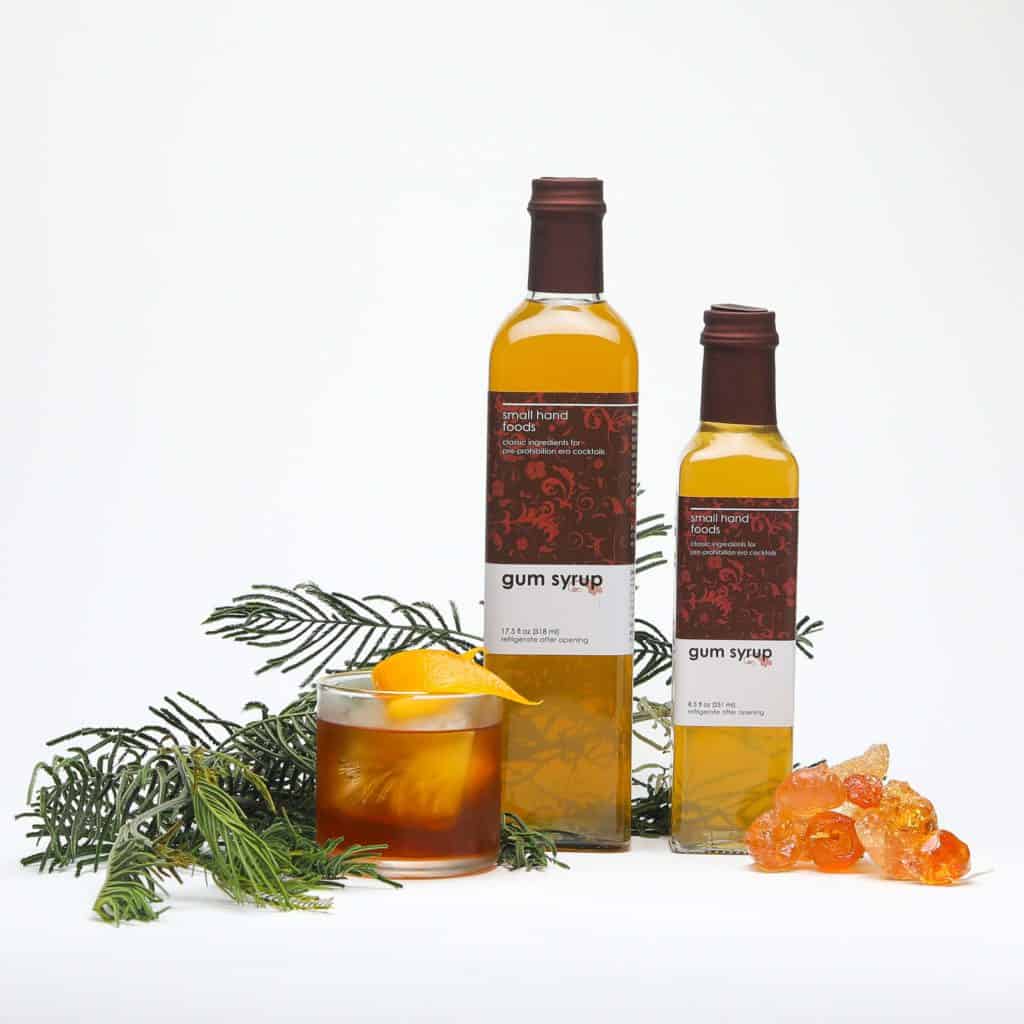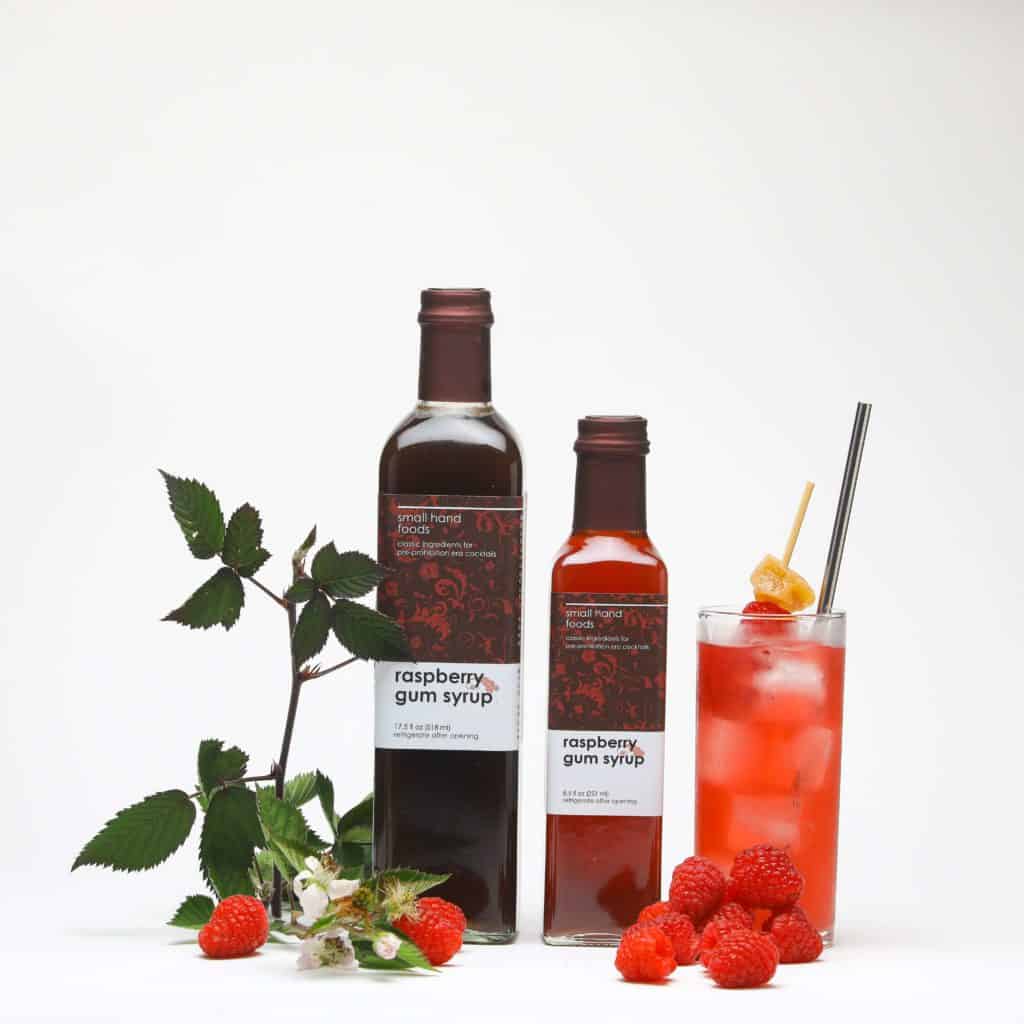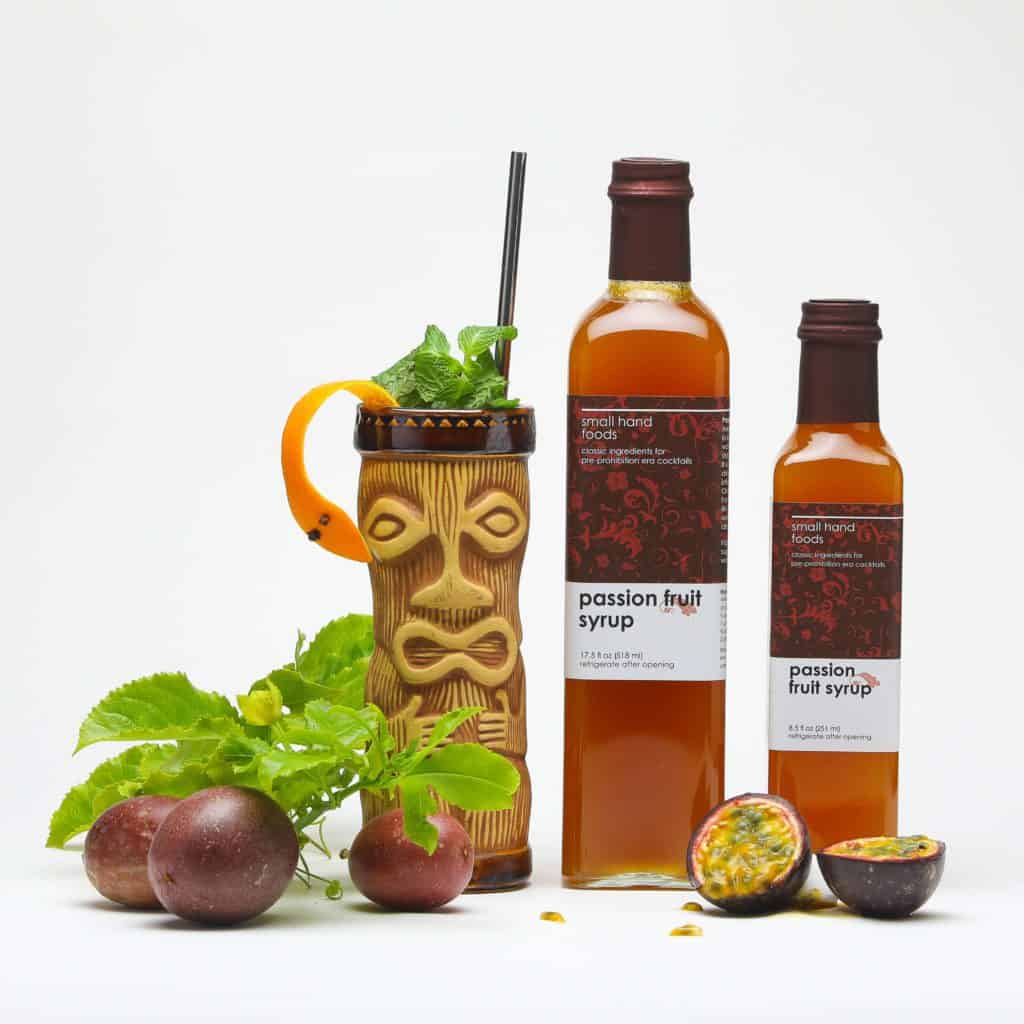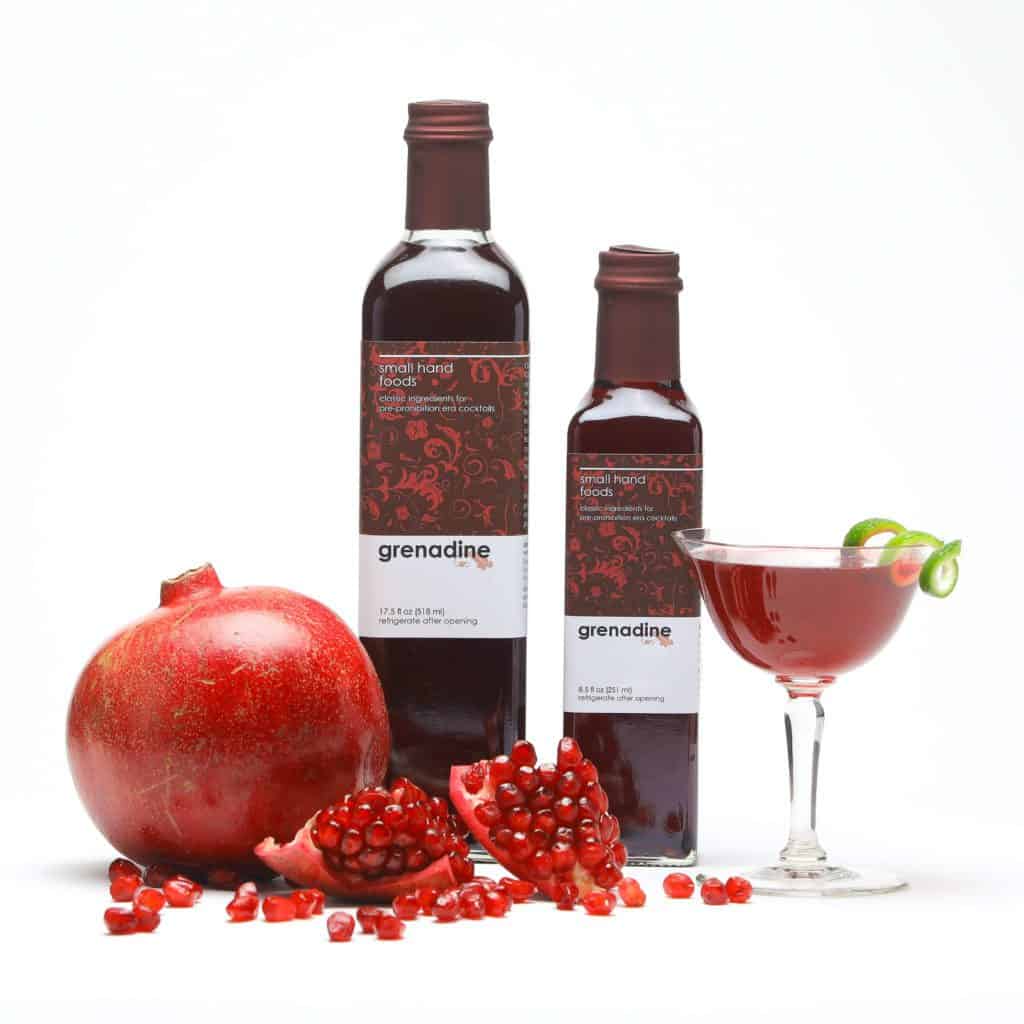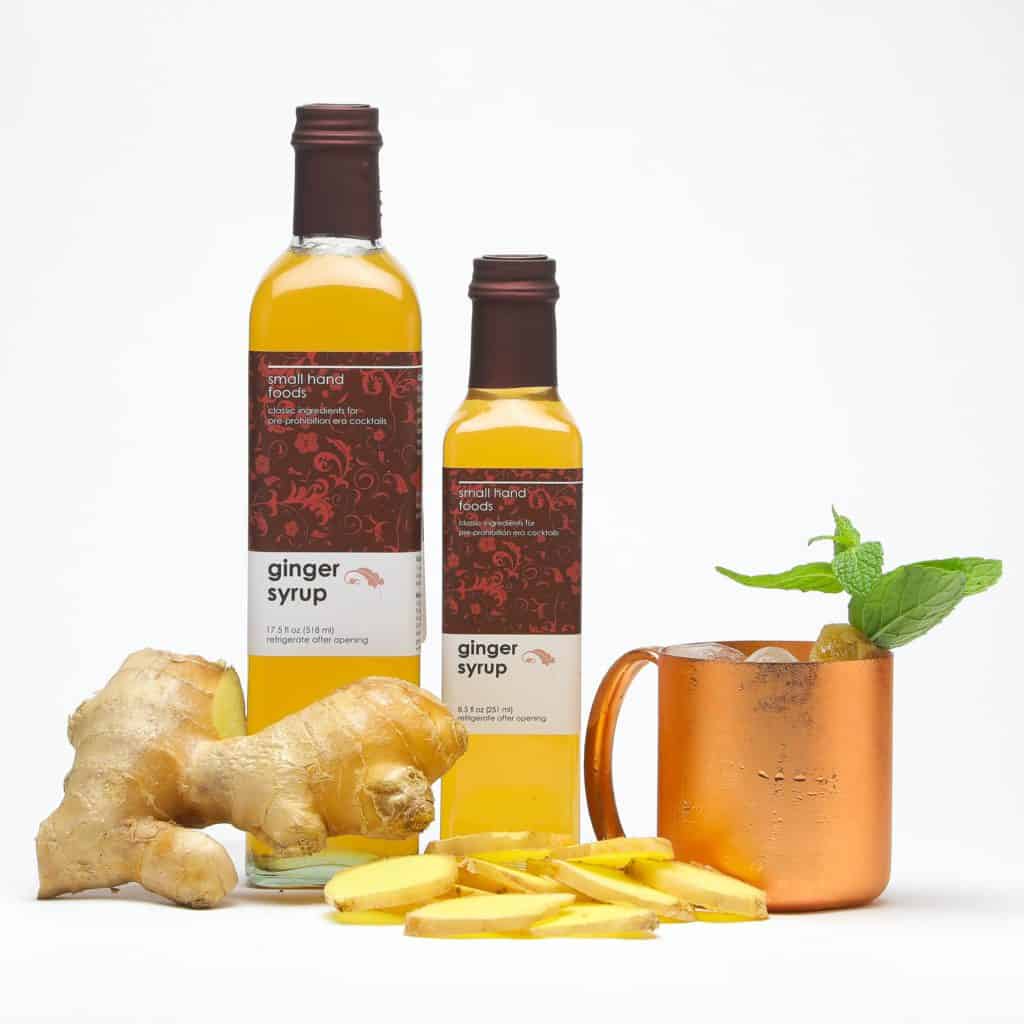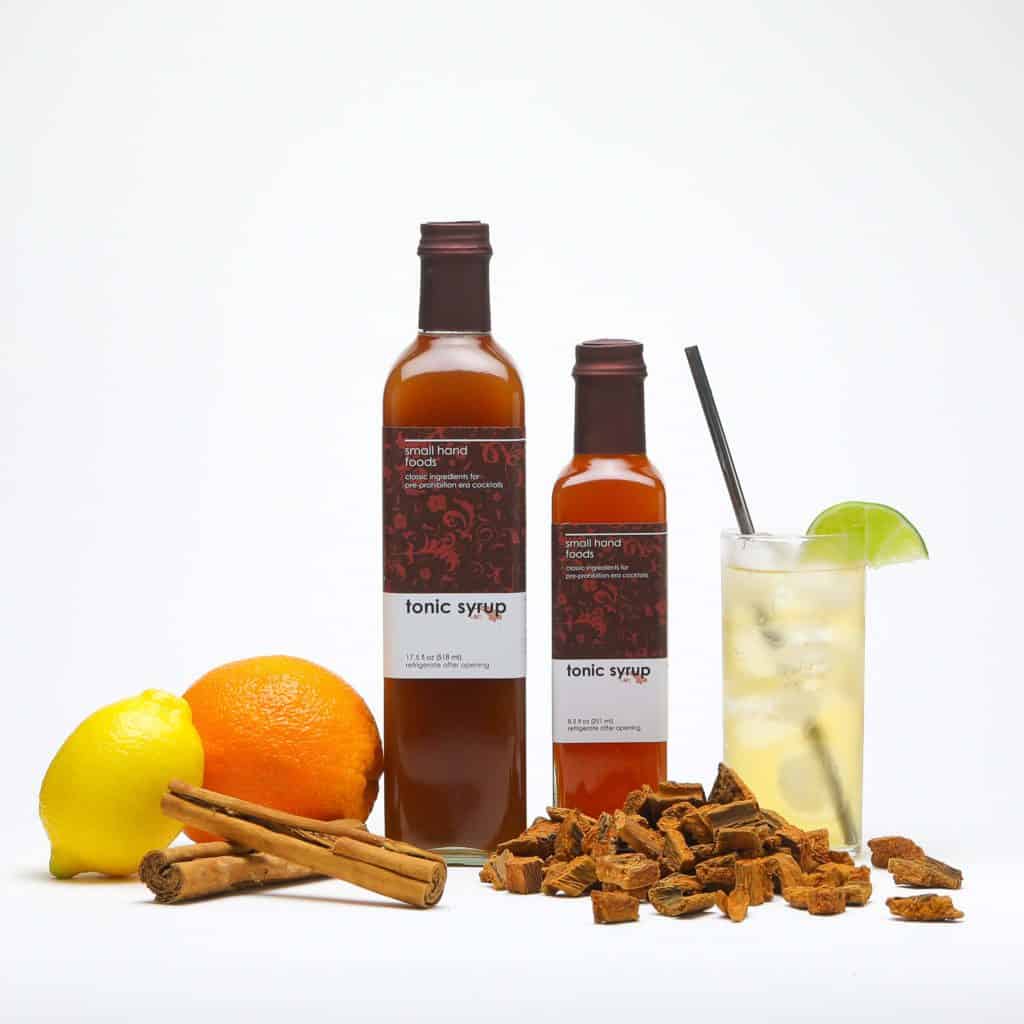Syrups
Orgeat
Pronounced or-zhat, orgeat is a French almond syrup, originally made from barley and used as a shelf-stable substitute for milk. Many cultures have versions, from Valencian orxata to Dutch orgeade to Mexican horchata. Made from California almonds and a small proportion of apricot kernels to give it a distinct “marzipan” flavor without the addition of extract. Organic cane sugar, orange flower water and biodynamic California brandy are added to result in a rich, flavorful syrup with delicate floral notes. Orgeat is used in the Mai Tai, a drink first created at Trader Vic’s in Oakland in 1944, as well as the Japanese Cocktail and various absinthe concoctions. It is also delicious as a spritzer with seltzer or used to sweeten lemonade.
Gum Syrup
Also known by its French spelling, gomme, gum syrup is a sugar syrup with gum arabic, a resin from the Acacia tree, incorporated into it. Gum syrup fell out of favor with bartenders because it is difficult to make, and a straight simple syrup is both easier and cheaper. However, where both syrups add sweetness, gum syrup adds viscosity as well, giving a richer mouthfeel and weightier texture to cocktails. Organic cane sugar gives the syrup an amber color and a light molasses flavor. It is best used in aromatic, spirit-forward cocktails such as Sazeracs, Old-Fashioneds and Juleps.
Pineapple Gum Syrup
A pineapple-infused gum syrup made by pressing fresh fruit and blending it with gum syrup, resulting in a golden amber syrup with high viscosity, bright acidity and exceptionally rich mouthfeel. Pineapple Gum Syrup is a key ingredient in the San Francisco classic cocktail Pisco Punch, as well as fixes and cobblers of all kinds.
Raspberry Gum Syrup
Called for in many early cocktail recipes, raspberry gum syrup is often substituted for grenadine due to its intense berry color. Its flavor, however, is distinctly bushberry, candied and less tannic than grenadine. Try a Jack Rose with both; you’ll be surprised at the difference. Incorporating organic raspberries into gum syrup yields a bright yet unctuous liquid with concentrated berry flavor and mouth-coating viscosity. Try it in a Clover Club or Maiden’s Blush, or use it to sweeten your favorite fizz.
Passion Fruit Syrup
Passion Fruit is native to South America but grown widely in lush climates around the world, resulting in its use in tiki-style and other tropical drinks. It is called for in a Hurricane, a drink native to the Caribbean-influenced port of New Orleans. Try it in a Sidewinder’s Fang or a Zombie for a true tiki experience!
Grenadine
The ubiquitous cherry-red bottle of syrup holding court at every bar, modern grenadine is a far cry from its pomegranate origins. Many cultures enjoy pomegranate juice when it is available, as did early bartenders in America and abroad. Rest assured, they were not using high-fructose corn syrup colored with red #40. Our grenadine is made from pomegranates and cane sugar; no water or other ingredients added. The bright acidity and tannic backbone of this syrup will transform any drink that uses it. Try it in a Jack Rose or a Ward Eight, or add to ginger ale for an authentic Shirley Temple.

